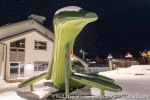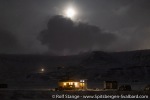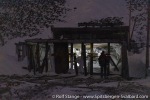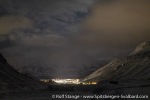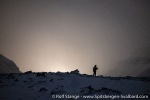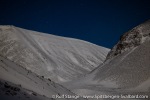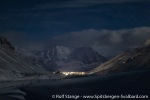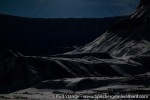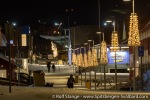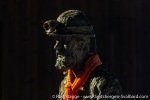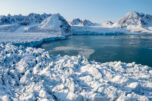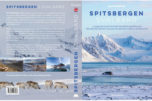-
current
recommendations- Liefdefjord
New page dedicated to one of Spitsbergen's most beautiful fjords. Background information and many photos.
- New Spitsbergen guidebook
The new edition of my Spitsbergen guidebook is out and available now!
- Liefdefjord
New page dedicated to one of Spitsbergen's most beautiful fjords. Background information and many photos.
Page Structure
-
Spitsbergen-News
- Select Month
- May 2025
- April 2025
- March 2025
- February 2025
- January 2025
- December 2024
- November 2024
- October 2024
- September 2024
- August 2024
- July 2024
- June 2024
- May 2024
- April 2024
- March 2024
- February 2024
- January 2024
- December 2023
- November 2023
- October 2023
- September 2023
- August 2023
- July 2023
- June 2023
- May 2023
- April 2023
- March 2023
- February 2023
- January 2023
- December 2022
- November 2022
- October 2022
- September 2022
- August 2022
- July 2022
- June 2022
- May 2022
- April 2022
- March 2022
- February 2022
- January 2022
- December 2021
- November 2021
- October 2021
- September 2021
- August 2021
- July 2021
- June 2021
- May 2021
- April 2021
- March 2021
- February 2021
- January 2021
- December 2020
- November 2020
- October 2020
- September 2020
- August 2020
- July 2020
- June 2020
- May 2020
- April 2020
- March 2020
- February 2020
- January 2020
- December 2019
- November 2019
- October 2019
- September 2019
- August 2019
- July 2019
- June 2019
- May 2019
- April 2019
- March 2019
- February 2019
- January 2019
- December 2018
- November 2018
- October 2018
- September 2018
- August 2018
- July 2018
- June 2018
- May 2018
- April 2018
- March 2018
- February 2018
- January 2018
- December 2017
- November 2017
- October 2017
- September 2017
- August 2017
- July 2017
- June 2017
- May 2017
- April 2017
- March 2017
- February 2017
- January 2017
- December 2016
- November 2016
- October 2016
- September 2016
- August 2016
- July 2016
- June 2016
- May 2016
- April 2016
- March 2016
- February 2016
- January 2016
- December 2015
- November 2015
- October 2015
- September 2015
- August 2015
- July 2015
- June 2015
- May 2015
- April 2015
- March 2015
- February 2015
- January 2015
- December 2014
- November 2014
- October 2014
- September 2014
- August 2014
- July 2014
- June 2014
- May 2014
- April 2014
- March 2014
- February 2014
- January 2014
- December 2013
- November 2013
- October 2013
- September 2013
- August 2013
- July 2013
- June 2013
- May 2013
- April 2013
- March 2013
- February 2013
- January 2013
- December 2012
- November 2012
- October 2012
- September 2012
- August 2012
- July 2012
- June 2012
- May 2012
- April 2012
- March 2012
- February 2012
- January 2012
- December 2011
- November 2011
- October 2011
- September 2011
- August 2011
- May 2011
- April 2011
- March 2011
- February 2011
- January 2011
- December 2010
- November 2010
- September 2010
- August 2010
- July 2010
- June 2010
- May 2010
- April 2010
- March 2010
- February 2010
- November 2009
- October 2009
- August 2009
- July 2009
- June 2009
- May 2009
- April 2009
- March 2009
- February 2009
- January 2009
- December 2008
- November 2008
- October 2008
- August 2008
- July 2008
- June 2008
- May 2008
- April 2008
- March 2008
- February 2008
- April 2000
- Select Month
-
weather information
-
Newsletter

| Guidebook: Spitsbergen-Svalbard |
Home →
Yearly Archives: 2023 − News & Stories
SV Noorderlicht grounded in Norway, free again
Thursday early morning, the sailing ship Noorderlicht ran aground in Norway. The accident site was at Rugholmen, north of Trondheim. Nobody was injured.

SV Noorderlicht (to the left) in Longyearbyen (2022).
There were 26 persons on board. 24 of them were soon evacuated by rescue forces without any drama or further danger. Captain and engineer remained on board with rescue forces on standby. After a while, they could get the ship off the rocks with towing assistance. SV Noorderlicht was then able to reach a port under her own steam. Damage appears accordingly little or none-existent. This was also confirmed by a speaker of the Norwegian police, as NRK reported.
An official hull inspection will be carried out before Noorderlicht is allowed to sail again.
Personal comment
I have many happy memories from voyages with SV Noorderlicht, both in Spitsbergen and mainland Norway. I wish all people concerned – passengers, crew and company – all the best, and safe and happy sailing again soon!
News from the north
For various reasons, I had to leave the news section on this website alone for a couple of days, but (almost) nothing is getting lost here … so, what has happened up there recently?
Actually, quite a lot:
Sun festival
The sun is back! Following good tradition, the return of the sun was celebrated in Longyearbyen with the key event on 08 March. That is the day when the sun is actually visible again above the mountains from Longyearbyen. From the old parts of Longyearbyen, that is, where the tradition was born; you can actually see the sun a couple of days earlier from the newer parts of Longyearbyen close to the fjord. And already in late February from suitable places in the surroundings of Longyearbyen, in elevated positions or in Hiorthhamn (on the north side of Adventfjord). As long as you have a clear view to the south.
Talking about a free view: it all doesn’t really help when the sun is hiding behind clouds. This was the case this time on 08 March. Nevertheless, locals and tourists celebrated the occasion with a series of cultural events that come with the return of the sun.
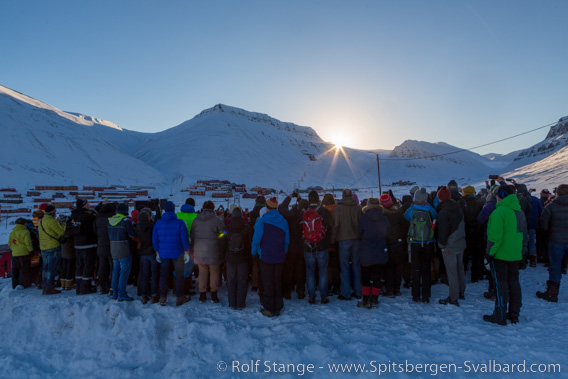
sun festival with clear sky (archive image; this time, it was overcast).
Emergency rescue services in demand: accidents and evacuations
The busy winter season is in full swing, and the emergency rescue services are in demand. On Saturday, a ski hiker was rescued during stormy weather from Rabotbreen. Due to seriously bad weather, SAR forces had to abort a first attempt to find the man on Friday, but a short weather window allowed for a successful helicopter flight on Saturday. In the meantime, the man, a Polish citizen, has talked to various media. He was on the way to Newtontoppen, to prepare for a later expedition in Antarctica. With several expeditions in arctic parts of Canada and Siberia, the man has considerable relevant experience.
This was only one of several recent examples. During the busy winter season, it is not a very rare event that people – tourists or locals – have to be evacuated from the field after snow mobile (or other) accidents.
The local section of the Red Cross reminded everybody recently that also professional SAR forces have to deal with weather and other dangers of nature and may not alway be able to promptly help people in need, especially under conditions when things are likely to happen.

Snow mobile group out on tour in Adventdalen.
One of the more curious events of this kind in a wider sense happened on Tuesday in Hiorthhamn, when a snow mobile caught fire. No people were harmed. The exact reason is not publically known in this case, but it may for example happen when someone drives with the hand brake put on. Not unheard of.
While I was writing these lines on Wednesday, a serious snow mobile accident happened that sadly took one person’s life. Read more about this case here in a dedicated posting (I kept the article that you are reading right now unpublished for another day because it felt inappropriate to publish it, where the news of a fatal accident are just one of many bits and pieces of information).
By now, there is some more information available. The deceased person was in his 60s and travelling alone. He was the last one in a guided group of snow mobile tourists when he got off the track and fell down a steep, 10-12 metres deep ravine. First aid measures were applied but when the SAR helicopter arrived, saving the man’s life was beyond reach despite of all efforts.
Small ships under pressure, big ones coming big time
Bigger cruise ships may be in for a record-breaking summer. A spectrum from 100+ passenger expedition ships to large cruise ships carrying several thousand passengers may bring up to 75,000 tourists to Longyearbyen in the upcoming summer. This will, for example through port fees, bring a lot of money to Longyearbyen’s public cash balance and private companies will also benefit, but others watch this development with mixed feelings. There are many locals who feel that the place is overcrowded when large cruise ships are in port, and the hospital has already expressed worries regarding health service capacities.
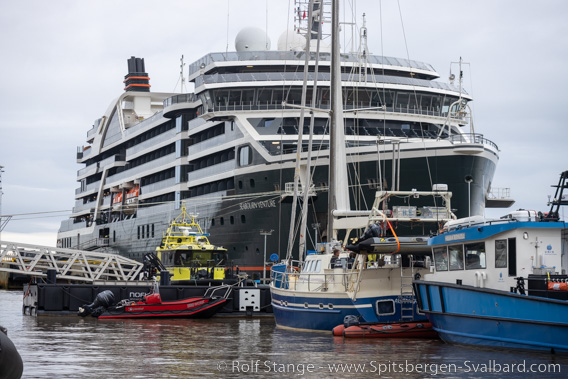
Tourists travel to Svalbard on a wide range of ships from small sailing boats to large cruise ships.
At the same time, tour operators focussing on small ships are worried about the future of their activities which is threatened by serious restrictions announced by the Norwegian government. They have been matter of controversial public discussion already for some time. There are no recent news, and we have to wait and see what the result of the process will look like. On Wednesday, representatives of the local economy travelled to Oslo to present their viewpoint and express their worries about politics that, as they feel, seem to have lost the connection to the local reality.
It seems as if the mission of the Longyearbyen representatives had at least some success: several members of the Norwegian parlament have since exppressed doubts about the legal proposals and suggested to put the process on hold until the new Svalbardmelding is out in 2024. The Svalbardmelding is a government declaration that defines a frame for future Svalbard politics for a couple of years. The last one came out in 2016, and it did not say anything about closing large parts of the archipelago for most people and other stuff that is going on right now.
Click here to read more about the plans of the Norwegian government. According to current knowledge, we expect changes to enter force in 2024.
At the same time, Norwegian oil and gas businesses celebrate a record-breaking year, due to high prices on the world markets which are at least in part the consequence of the Russian war against the Ukraine, and new discoveries in the North Sea, according to NRK.
Few will deny that certain fields of regulation concerning tourism need improvement, for example a guide certification scheme which has been discussed for years, a limit to the number of expedition ships (100 or maximum 200 passengers capacity), a size limit for larger ones and a general ban on crude oil in arctic waters, while there is no factual reason to dispossess really small ships of the possibility to land passengers almost anywhere on Svalbard’s coastline as has been the case so far. But considering the political pressure on tourism in Svalbard on one side and the further development of oil and gas, one may experience Norwegian environmental politics as rather ambivalent.
Environmental toxins at Hotellneset
Pollution problems of certain areas at Hotellneset, near the airport, with certain long-lived environmental toxins (PFAS) thought to cause cancer have been known for years. The substances go back to firefighting substances used on a firefighting exercise area. Jørn Dybdahl, formerly owner of a riding centre at Hotellneset, considers his cancer to be related to the local pollution. The handling of the matter by relevant authorities has been a matter of criticism for a long time.
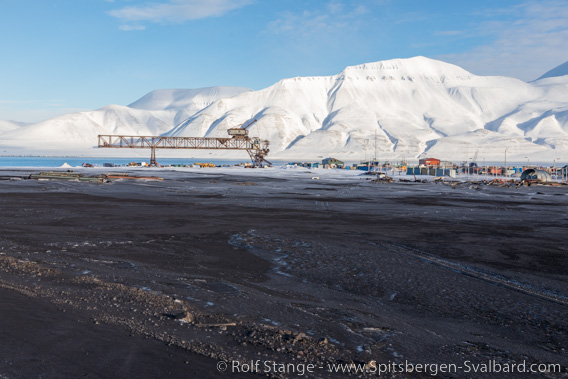
Hotellneset near Longyearbyen airport has a long history of industrial use and corresponding pollution.
Naturvernforbundet in Troms, an ecology group form north Norway, have recently added to the criticism: while 100 mg are the theshold value for PFAS in mainland Norway and environmental authorities are actually debating the reduction of the allowed maximum value to 2 mg, the Norwegian environmental authority (miljødirektorat) has suggested 150 mg to be an acceptable maximum value for Hotellneset. Naturvernforbund Troms fears that environmental standards are lowered to save costs of the clean-up which has to be carried out. Accepting higher threshold values would indeed be a strange step especially in an arctic ecosystem which due to the low temperatures is especially sensitive to chemical influences.
Fatal snow mobile accident
One person died in a fatal snow mobile accident today (Wednesday, 15 March), according to the Sysselmester. The accident happened on a frequently used snow mobile route between Kapp Laila (Colesbukta) and Barentsburg, about two kilometres west of Kapp Laila.

The snow mobile route between Kapp Laila and Barentsburg.
The exact position of the accident is not yet publically known, but the approximate position suggests that the accident happened in the vicinity of a steeply incised valley. The route leads around the valley, but this can be challenging if, for example, the surface is icy. The man, a US citizen, was part of a guided tour.
There is currently no more information available.
Guidebook “Spitsbergen-Svalbard”: new edition available!
The new edition of the guidebook “Spitsbergen-Svalbard” (English) is now available!
The new edition is a comprehensive update. I made updates to the information in all chapters to bring the book up to date, up to January 2023. This means that there is quite a lot of new information, since the previous edition came out in March 2018, exactly five years ago, also due to the covid break.
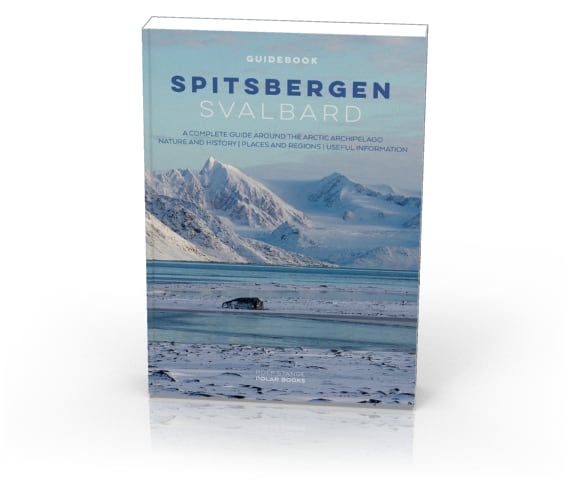
The new edition of the guidebook “Spitsbergen-Svalbard” is available now.
Looking good, isn’t it? 🙂
I have also re-worked the whole layout. Now the images are not organised in blocks anymore, but they are spread in the text, directly in the right place wherever they make sense, and that will make this book easier and more fun to use!
Click here for more information or to place an order.
By the way, to answer a question that I get quite frequently: we are currently investigating options to make the book available as an ebook. That is work in process, but I hope that we get a result in the not too far future.
Svalbard Global Seed Vault: 15th anniversary
The famous “Svalbard Global Seed Vault” celebrates its 15th anniversary these days. It was opened in February 2008 – that was one of the very first news on this site – and the anniversary was now celebrated on Sunday in Svalbardmuseum.

Svalbard Global Seed Vault: 15th anniversary celebrations these days.
This is the tunnel that leads to the actual vault in the mountain behind Longyearbyen airport.
The anniversary has attracted international media attention. Secretary of agriculture Sandra Borch should have joined the celebrations on Sunday, but she was not able to board her flight from Tromsø to Longyearbyen because she had forgotten her passport.
During the initial years of its existence, the Svalbard Global Seed Vault (SGSV) had to deal with various technical difficulties that required expensive technical upgrades. By now, approximately 1.2 million seed samples are stored in the vault. There is enough space for up to 4.5 million samples. All of these are from crop plants around the world, the Seed Vault does not store seeds of natural plants.
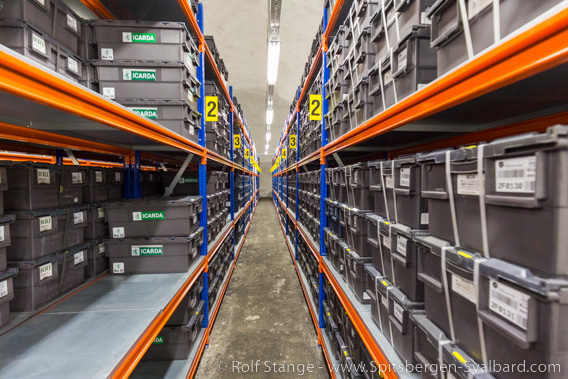
One of three chambers of the Svalbard Global Seed Vault.
The Svalbard Global Seed Vault is not accessible to the public. The operator organisation has announced a virtual tour to make the Seed Vault accessible at least online.
Something that has been availabel on this website already for years 🙂 Click here for a virtual tour of the famous Svalbard Global Seed Vault.
Housing market still tight in Longyearbyen
The housing market is still difficult in Longyearbyen. This was less apparent during the years with corona restrictions, but it is getting more of a problem again currently as the important winter tourist season starts.
Accommodation has always had a heavy price tag in Longyearbyen, but the situation became really difficult after a number of houses was lost during a snow avalanche in December 2015, which also took the live of two people, including one child. A number of houses with more than 100 units were abandoned after avalanche risk assessments. Avalanche fences and walls have since been built to secure remaining areas, but certain addresses still have to expect temporary evacuation in dangerous weather situations, as recently in Nybyen.
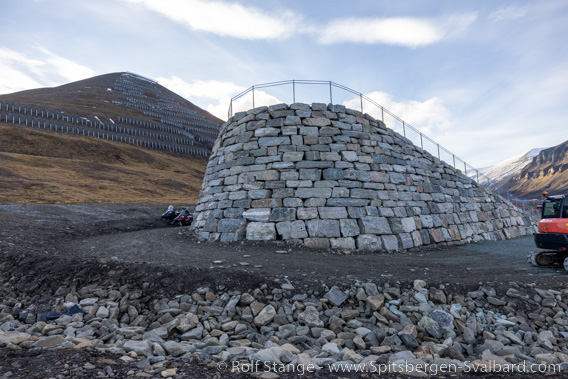
Avalanche wall near the mountain Sukkertoppen next to a residential area
in central location in Longyearbyen.
On top of that, the fire in September destroyed several houses with a number of flats. Nobody was injured, at least, although it was a narrow escape for some, who lost all their belongings in the fire.
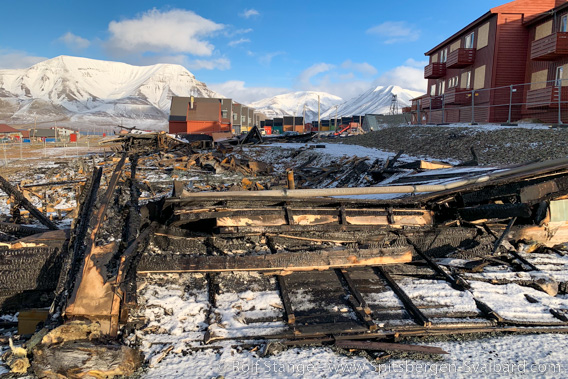
Several houses in central Longyearbyen were lost during a fire in September 2022.
New dwelling houses are under construction in several locations in Longyearbyen, mainly at Elvesletta, between the centre and the river Longyearelva. This may give visitors the impression that Longyearbyen is growing, but it is actually still a race to catch up with the losses.

Construction site in Longyearbyen: the place appears to grow,
but it is actually a matter of catching up with the losses.
The problem was less apparent in 2020 and 2021 due to corona, but now the winter season is under full steam. Just as the fishing industry on the mainland, the tourism industry depends on seasonal staff to run the business. But now the industry is facing bigger problems than ever before to find housing for their work force. There is no detailed data, but NRK assumes that there is a lack of housing for a three-digit number of people for seasonal jobs in tourism.
Main housing space owners in Longyearbyen include the state-owned companies Statsbygg and Store Norske. Statsbygg’s main task is to supply employees of the public sectors with accommodation, and they don’t consider it their job to help the tourism industry. Store Norske says they are willing to help, but this would obviously require available capacities.
Construction is going on, and many are hoping for an easier housing market in the future. But this will take years – and those out for housing will have to pay heavy prices if they find anything at all.
Buildings in Nybyen accessible again
The Sysselmester has cancelled the evacuation of the buildings on the east side of the road in Nybyen. The area behind buildings remains, however, closed due to the avalanche risk.
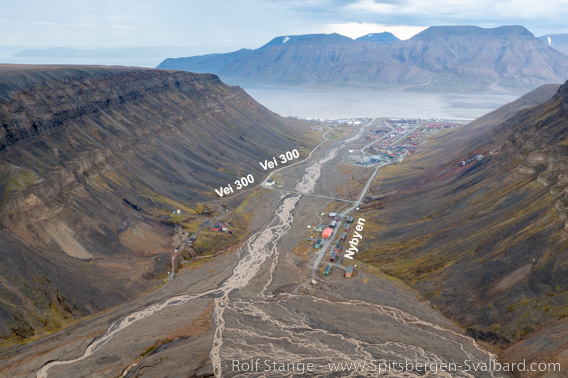
At least the buildings are accessible again in Longyearbyen’s upper part Nybyen. Way 300 (vei 300) is currently closed because of the avalanche risk.
The Norwegian meteorological institute predicts more wind and snowfall and still a significant avalanche risk (orange level), but the focus of potential avalanche activity has moved to the other side in Longyearbyen: Vei 300 close to Platåberget is now closed from Sverdrupbyen via Huset to the cossing close to the old museum.
Avalanche risk: parts of Nybyen evacuated
Parts of Nybyen, the upper part of Longyearbyen, were evacuated today because of a risk of avalanches. The part of Nybyen east of the road, the side towards the mountain Gruvefjellet, may not be entered. This concerns both the buildings and the area around them. This was decided today by the Sysselmester after consultations with relevant technical authorities.
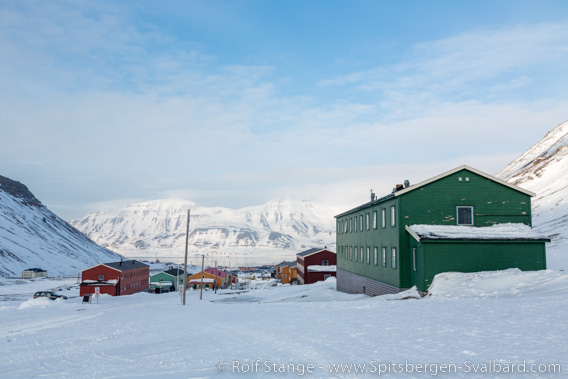
Longyearbyens upper part Nybyen: the buildings and area east of the road (right side of the picture) are currently evacuated and may not be entered.
Some of the buildings are used as student homes. Accommodation for these students was found in Elvesletta, a part of Longyearbyen near the centre.
It is currently not known how long the evacuation will be in force. The Sysselmester wrote that the avalanche risk will be evaluated continuously and updated information will follow until tomorrow (Tuesday) 1300.
The Norwegian weather service predicts wind and snow for the next days.
Further exceptions for driving licenses
The driving license question was one of last year’s major issues in Longyearbyen: in November, it was suddenly found out that driving licenses from a number of countries are not valid in Spitsbergen. The reason involves a lot of juridical small print: driving licenses need to meet the requirements of the Vienna Convention on Road Traffic to be valid in Spitsbergen. This convention was ratified by 85 countries – this leaves many which are not part of that club, such as the United States, Canada and Indonesia, to mention just a few.
There are many citizens of these countries living in Longyearbyen, and many of them need to drive as part of their work or everyday life. The thought of not having a valid driving license has shocked many of them. It is said that there are cases where people have already lost their jobs and home. In Longyearbyen, many employees get their accommodation supplied by their employer. If you lose your job, then you lose your accommodation at the same time.
In December, the Sysselmester announced exceptions for certain types of driving licenses after negotiations with relevant Norwegian authorities. This was a relief for many, but not for all who are concerned.
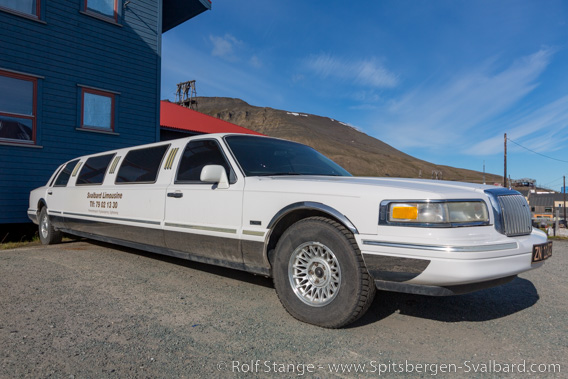
The amount of road traffic in Longyearbyen is remarkable, and so are some of the cars that you can see there.
Norwegian authorities now went a step further, as the Sysselmester announced today: now there are exceptions for driving licenses from countries that have ratified that Geneva Convention of 1949 on road traffic. This includes a number of countries that are not part of the Vienna convention, such as the USA and Canada. This may be helpful for citizens of these countries who live in Longyearbyen, but also for tourists who want to rent a car or drive snow mobile.
The exception is valid through 2023. During this year, Norwegian authorities want to work with the issue to find a proper long-term solution.
New rules in the making
New and stricter regulations have been in the legislative process now for years. These rules will not only, but mainly concern tourism. A propsal for a new set of rules was made public and went through a public hearing in early 2022. The number of submissions in the public hearing – 92 – was unusually high, and also beyond that, there was and is an ongoing, rather controversial public discussion about the new regulations.
Now the process had taken a major step. The responsible technical authority, Miljødirektoratet (the Norwegian national environmental agency) has gone through the proposal in the light of the input from the public hearing. This took more than half a year. The result? Practically non-existent – the Miljødirektorat has passed the proposal on, back to the government, almost without changes, as for example NRK wrote.
The most important changes include:
- Landings in the major protected areas will be restricted to 43 selected sites. The large remaining part of these huge areas will then in practice be closed for the public. Areas outside the national parks and nature reserves are not concerned. Also the national parks in Isfjord shall remain accessible in the same way as today.
- Also on the west coast, passenger (cruise) ships are limited to a maximum of 200 passengers on board, as already in the nature reserves which comprise the whole eastern part of Svalbard. This would, in practice, mean that large, international cruise ships can not visit Spitsbergen anymore. Until now, Spitsbergen has been a regular destination for some of these ships, although restricted to Isfjord (mainly Longyearbyen) in practice due to legislation that is already in force, mainly the ban on heavy oils in the national parks.
- A general minimum distance of 500 metres to polar bears. Minimum distances are also proposed for walruses: 300 m for boats from resting places (original “liggeplasser”) and 150 on land.
- Further regulations include, amongst others, a ban on breaking fjord ice (this is already forbidden), a ban on motorised traffic (snow mobiles) on fjord ice (also nothing really new) and a ban on drones in protected areas (so far already regulated, but not generally forbidden).

Hiking in a remote part of Nordaustland:
not possible anymore when the new rules are in force.
This means that the original proposal will now be passed on to the government for further legislative processing almost without chances. Especially the idea to limit the quantity of tourism, especially the number of ships, rather than their range, was in practice ignored. A representative of the Miljødirektorat told Svalbardposten actually that there are “several possibilities to solve this”, referring to “concessions”, which would effectively reduce the number of ships. But this is still not part of the proposal, as the evaluation of such possibilities “was not part of the mandate”, according to the representative interviewed by Svalbardposten.
Now the whole package will go back to the government for further consultations until it is turned into a law that can be passed by the parliament and then turned into valid law by the signature of the Norwegian king. This may still take some time, and there may still be changes. But the probability that the final law will look very similar to the original proposal has now strongly increased.
The original schedule included 01 January 2023 as the day when the new laws should enter force, something that has obviously not happened yet. There are those insiders in Longyearbyen who are certain that the new rules will not effectively come before 2024, but there is no really reliable information publically available.
Comment
Good to hear: there would have been other – better! – ways of dealing with the key problems. Too bad they were just not part of the job of Miljødirektoratet as ordered by the environmental ministry. Nice to hear that they knew this. It would have been even nicer if they had done anything with it. This opportunity passed unused, at least as far as Miljødirektoratet is concerned, a player on the lower levels of the legislative process, but a key player. It would probably have been naive to expect something different, considering how other legislative processes went in recent years, the most prominent one probably being the voting rights issue. The Miljødirektorat didn’t have anything to do with that one, but it indicates a remarkable consistency of Norwegian law-giving in recent years in this regard.
Most people will agree that the grown and still growing number of cruise ships is a matter of concern. There were about 80 passenger ships in Svalbard in 2022, and that number is expected to grow unless something happens. A focus of the growth is on ships with a capacity between 100 and 200 passengers: small enough to sail below the intended limit of 200 passengers (intended on the west coast, already in force in the east, to be precise), but large enough to leave more of a local footprint, for example in shape of erosion, than the really small ships, most of which carry 12-30 passengers.
One may ask: if the number of ships is the main problem, why not do anything with the number of ships? A permit system could effectively limit – and reduce – the number of ships to a sustainable level. But this is not the plan. Not part of the job, sorry. Too bad.
On top of these concerns comes the impact of climate change on arctic nature, as no serious voice can deny. It is great to hear that politicians in Oslo are concerned by climate change. Even better if they want to do something about it. Please, go ahead – today, not tomorrow! It is not my intention to pretend that Norway is not doing anything about climate change. But as a country that has been making fabulous money with oil and gas for decades, Norway’s credibility within the fight against climate change is limited, to put it mildly. Yes, Norwegian production of oil and gas reacts to demand in other European countries, who have not done their homework with regards to making their energy markets greener and rather bought cheap Russian oil and gas which needs to be replaced now on short notice. That is all well understood. Still, Norway’s credibility is limited and introducing measures that won’t make a difference for the fight against climate change, but will hit an industry hard – obviously an industry not considered relevant on a national level in Norway, and partly even an international industry – will not make any positive contribution. The price is paid by others, but who cares as long as it looks good in some way, almost if they’d actually really do something. In this last sentence, emphasise almost, not really.
New Year’s Eve and polar night
This website’s start into the new year was as grim as one could only imagine. Now this second posting is also dedicated to dark affairs, but in a completely different sense that includes the very special aesthetics of the polar night. Here are some impressions from the darkest time of the year in the high north, where New Year’s Eve celebrations follow a pattern quite similar to what most readers will know from wherever – in the end, almost everywhere in the world the old year is seen off and the new one welcomed with some fireworks. In Longyearbyen, there is a public one and very little private banging and shooting. Actually, there are two, a family-friendly one at 19.00 hours and then of course one at midnight.
- gallery anchor link: #gallery_2600
Click on thumbnail to open an enlarged version of the specific photo.
Arjen Drost, 1976-2023
Many knew Arjen Drost from countless trips in the Arctic and Antarctic over many years. Just a few weeks ago, he was in Antarctica, enjoying the wildlife and everything else he loved so much.
On Wednesday (January 04, 2023), he finally lost a fight that he had been fighting for years.
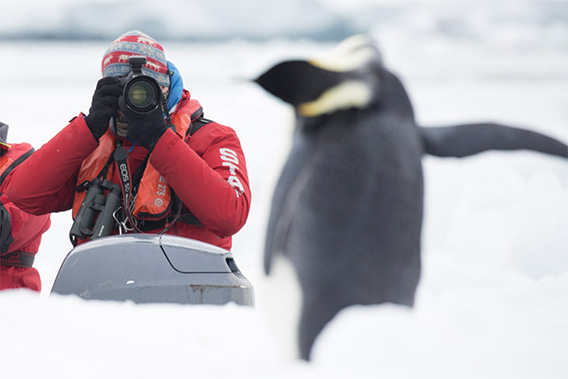
Arjen Drost, as he lived and loved his life, in the Ross Sea (2017).
Highly respected as a colleague.
Highly esteemed as a friend.
Much loved by many as the human being that he was.
Now Arjen is dancing with the northern lights.
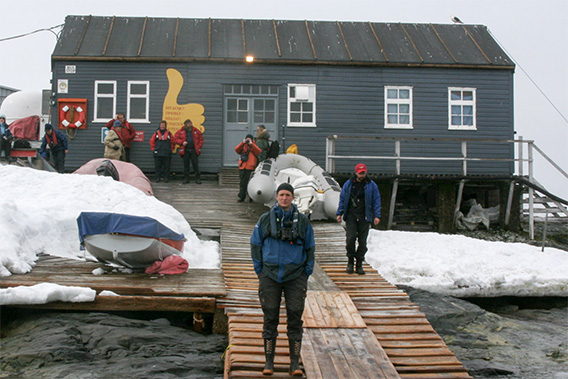
Arjen Drost, the “larger than life man”, in the Antarctic Peninsula.
Good times long gone by (Vernadsky Base, 2005).
News-Listing live generated at 2025/May/09 at 18:56:10 Uhr (GMT+1)
